Chapter six :
General Morphology of Urbanism
NOV.10.2023—JAN.27.2024
WITH WORKS BY Denicolai & Provoost and Sean Charlton White
OPENING
Fri.10.11.23 - 19:00-23:00
ON VIEW
Fri-Sat: 13:00-18:00
Mon-Thu by appointment
& during Hoogtij, Contemporary Art Tour.
Friday December 1st, 19:00—23:00.
WITH Denicolai & Provoost (Simona Denicolai & Ivo Provoost) and Sean Charlton White
NOV.10.2023 – JAN.27.2024
The sixth chapter of The Promise of Ruin(s) turns to the conceptual remnants of the Nature/Culture dichotomy, which became, since the Enlightenment, the dominant paradigm for understanding our relationship with the environment, justifying its commodification, and championing a historicity focused on the development of human civilization and its hub: the city.
The exhibition's title is a play on the 19th-century book 'Generelle Morphologie der Organismen' ('General Morphology of Organisms') by German zoologist Ernst Haeckel. Known as a speculator among his peers, he often ventured to use the same physical laws to explain both the organic and the inorganic. Echoing his aim to account for interrelation, the artists in this chapter highlight the obsolete character of positioning nature as an autonomous entity in human development, while articulating how clinging to this binary distinction generates a feeling of absurdity in light of the proliferation of artificial landscapes and ultra-controlled natural cycles. How to entertain the illusion of ‘virgin nature’ after capital’s unstoppable expansion into what was once out of its reach? Through works that challenge the conventions of genres typically associated with faithful representations of reality, these artists transform urban areas organised by neoliberal structures—where such dissonances manifest most intensely—into sites of inquiry.
Sean Charlton White
In Welkom in Nederland, Sean Charlton White portrays -with differing degrees of artistic licence- iconic landscapes and situations of everyday life in the Netherlands: views of grazing cattle when riding the train, unpredictable weather, the close and perfectly regulated coexistence of rural and urban regions due to the country's limited surface area. The series shares the title with a famous book aimed to help immigrants gain knowledge of Dutch society for the civic integration exam, a nod at both Charlton White’s effort to locate himself as a newcomer, and at the contemporary transformation of cultural traits into standardised features of an increasingly uniform yet inequitable West.
By means of astute alterations on otherwise documentary images, he draws attention to the alienating feeling brought about by an often clinically constructed landscape. As the changes blend in perfectly with the photographed environments, Charlton White stages a kind of speculative fiction whose total plausibility elicits both doubt in one's judgement and a sense of uncanniness at the realisation that even the most absurd of scenarios is conceivable in the context of a neoliberal society. Welkom in Nederland is thus both a study of form and an exercise of systematic mimicry that produces perfect satirical copies of a never-existing original.
This process is reversed in Arrested Tilburg man amazed by commotion surrounding his sandwich, a LED scrolling board displaying news headings from Dutch broadcasting outlets. Sampled following what could be called a method of intuitive inductive research, these unaltered data sets glide as a parade of events whose utter absurdity does not undermine its documentary value.
Denicolai & Provoost
Denicolai & Provoost present ‘HELLO, ARE WE IN THE SHOW?’, an animated short film depicting different scenes and species inhabiting the Belgian Sonian Forest. From serving as an exclusive hunting ground for the court of Maximilian I, to its role as a source of oak wood for Napoleon's naval fleet, the historical transformation of the forest's social and economic functions serves as an empirical record of the broader revolutions in the Western world’s relationship with its environment. Through a meticulous exploration of the site’s acoustic landscape, the film investigates the contemporary role of the forest as an outdoor leisure space for urban dwellers. Its proximity to the city of Brussels reveals a complex web of auditory stimuli: the gentle pattern of duck footsteps intermingles with the hum of nearby roadways, birdsong blends with the whooshing of aeroplanes and the occasional dog’s bark.
Manoeuvring the conventions and aesthetic norms of the animated film genre, ‘HELLO, ARE WE IN THE SHOW?’ combines certain stylistic features of a wildlife documentary with references to the process of representing reality through digital imaging—such as animated pixels and common sensors. This metafictional approach echoes our subjective position as a species compelled to categorise and transform the complexity of reality. Rather than portraying nature as an unaltered realm of life and death cycles existing independently of human presence, or vilifying the tangibility of its impact, the artists draw attention to the idleness of such divisions, advancing a more critical understanding of the relationships that every organism maintains with its surroundings and with one another.
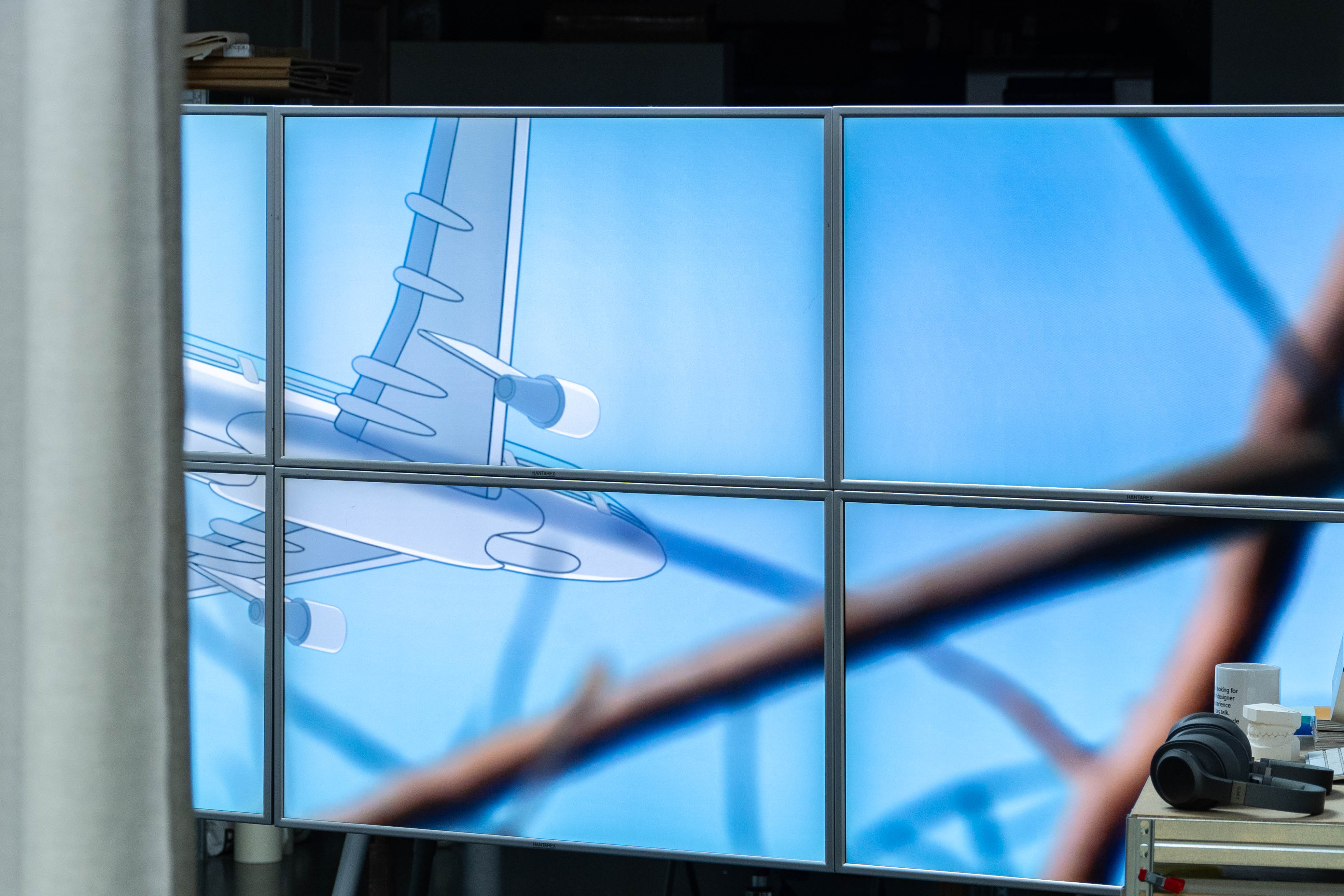
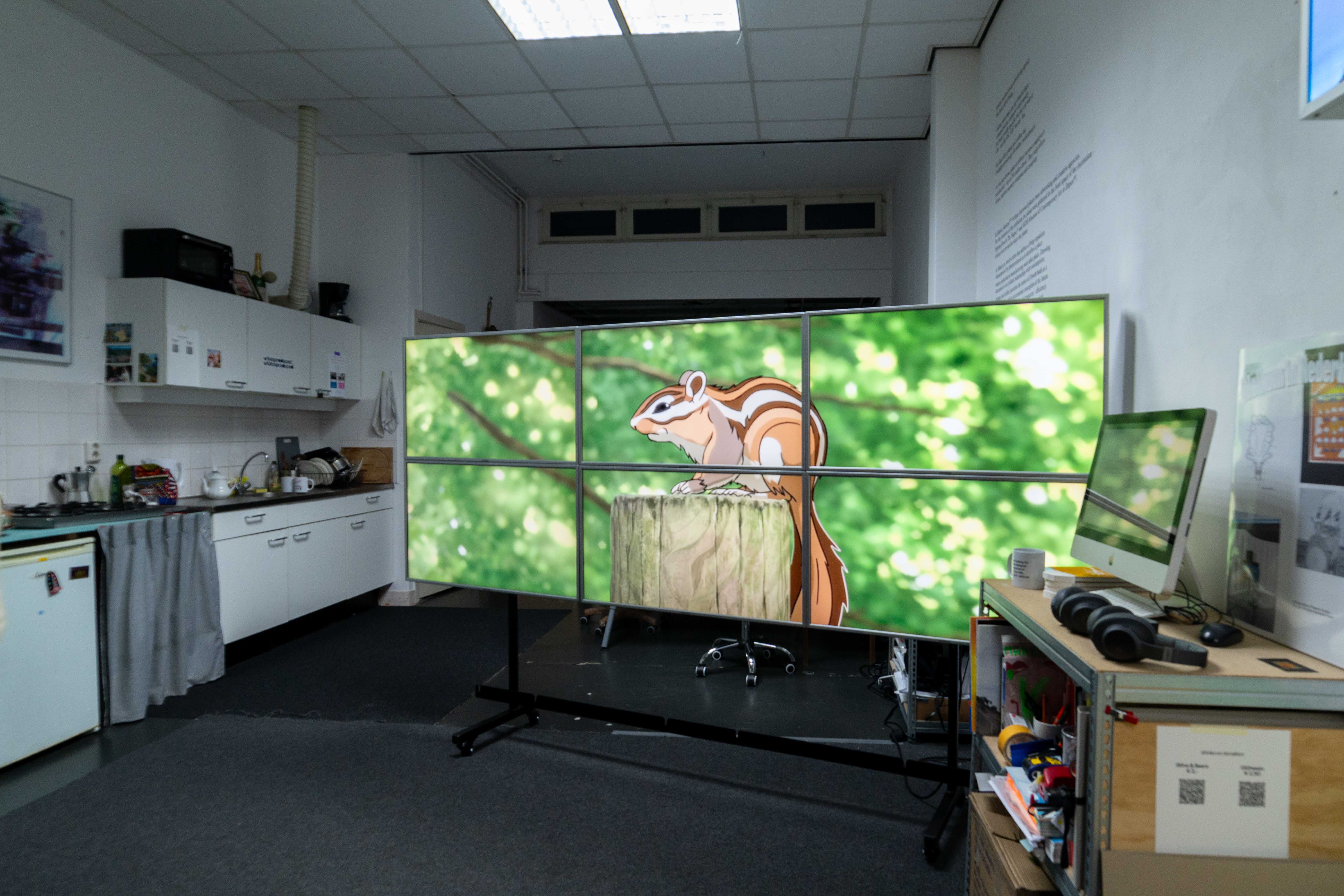

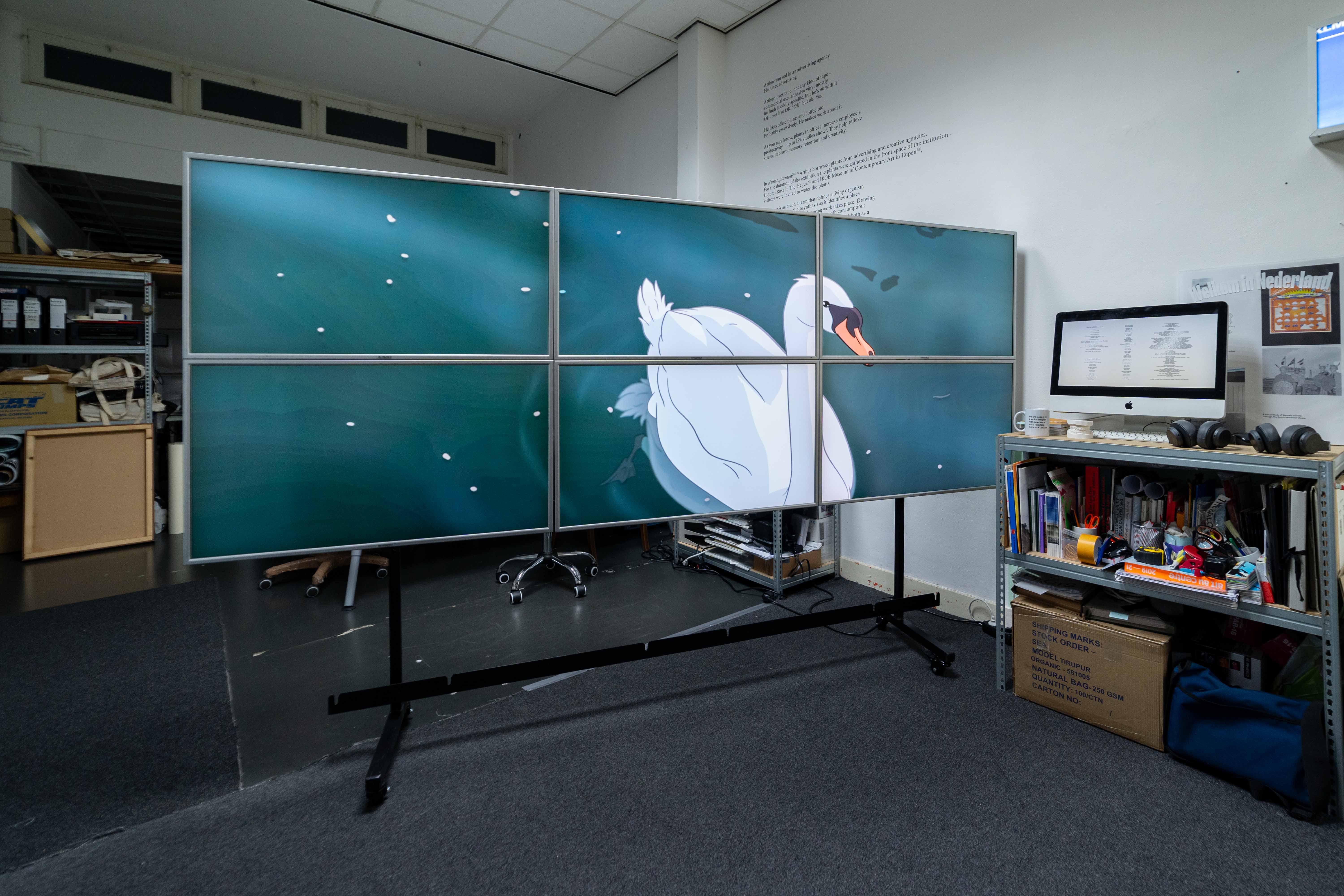
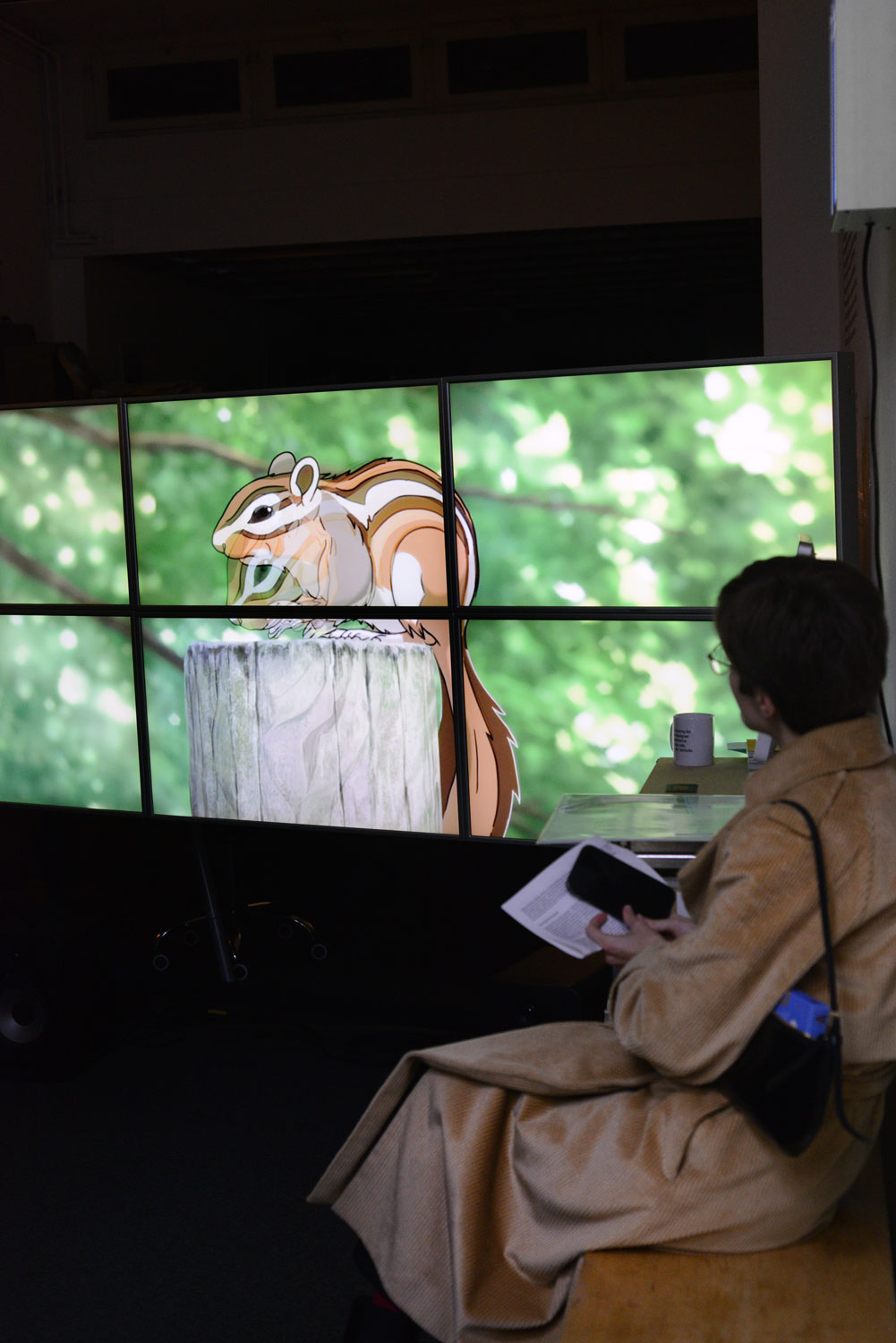
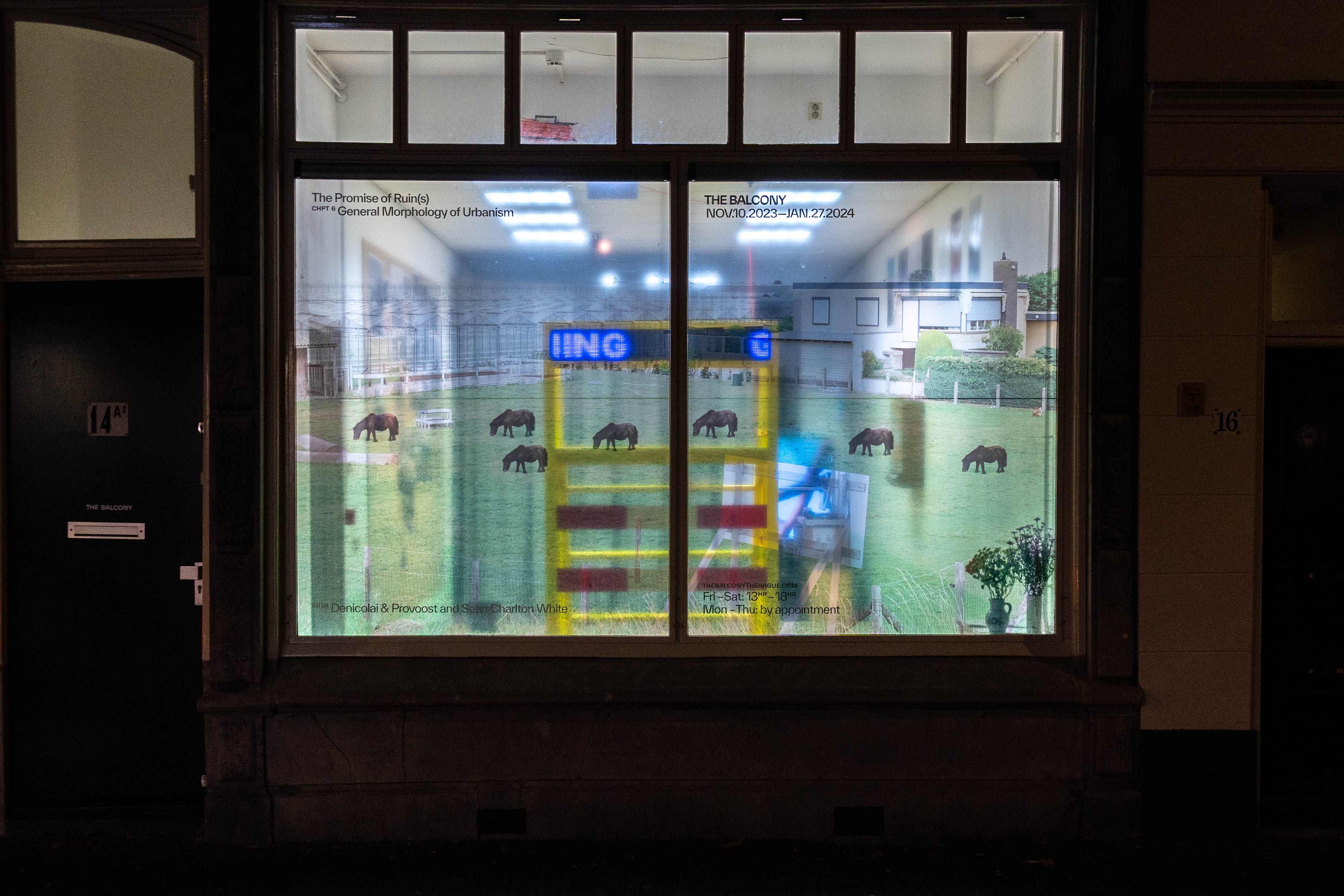
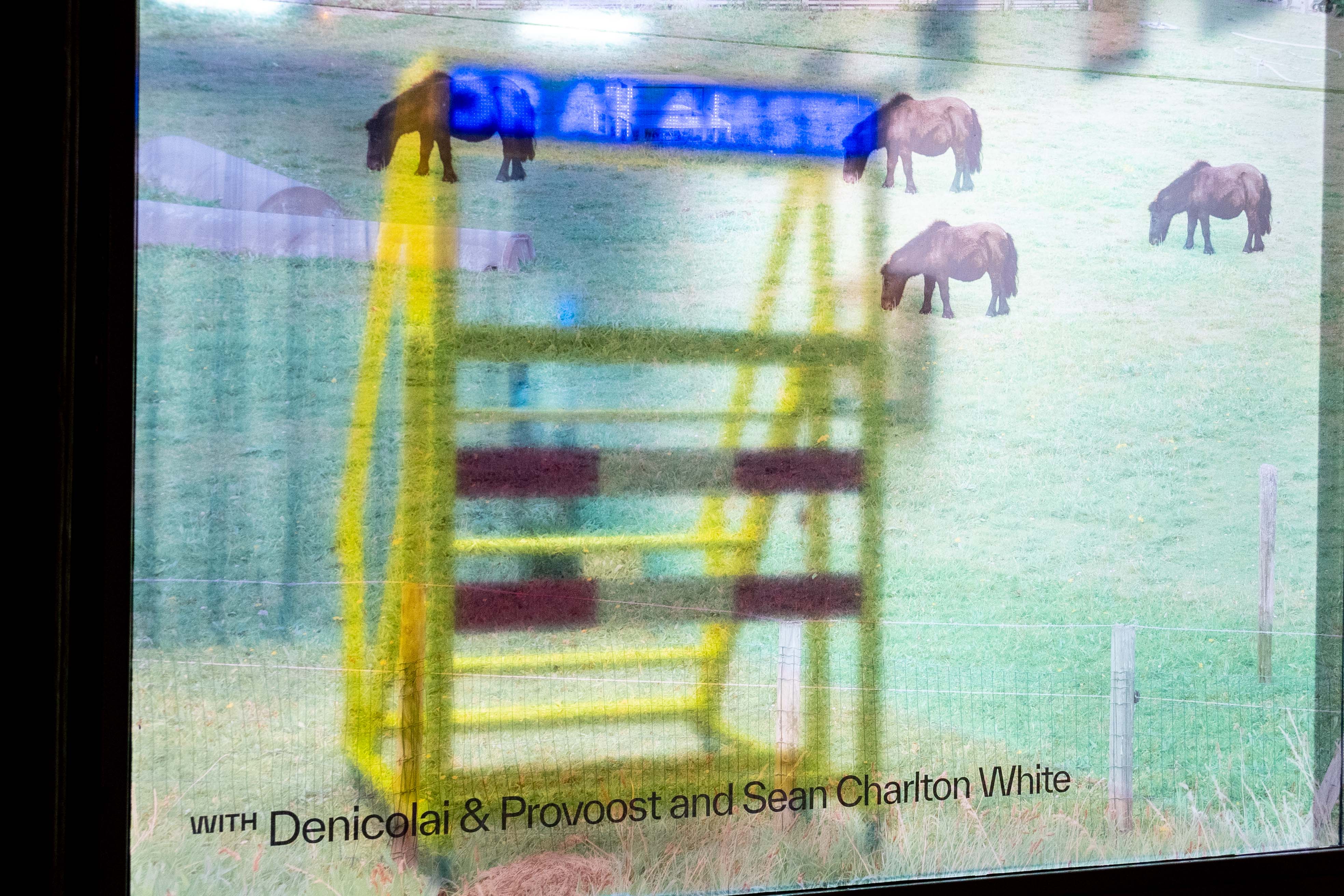

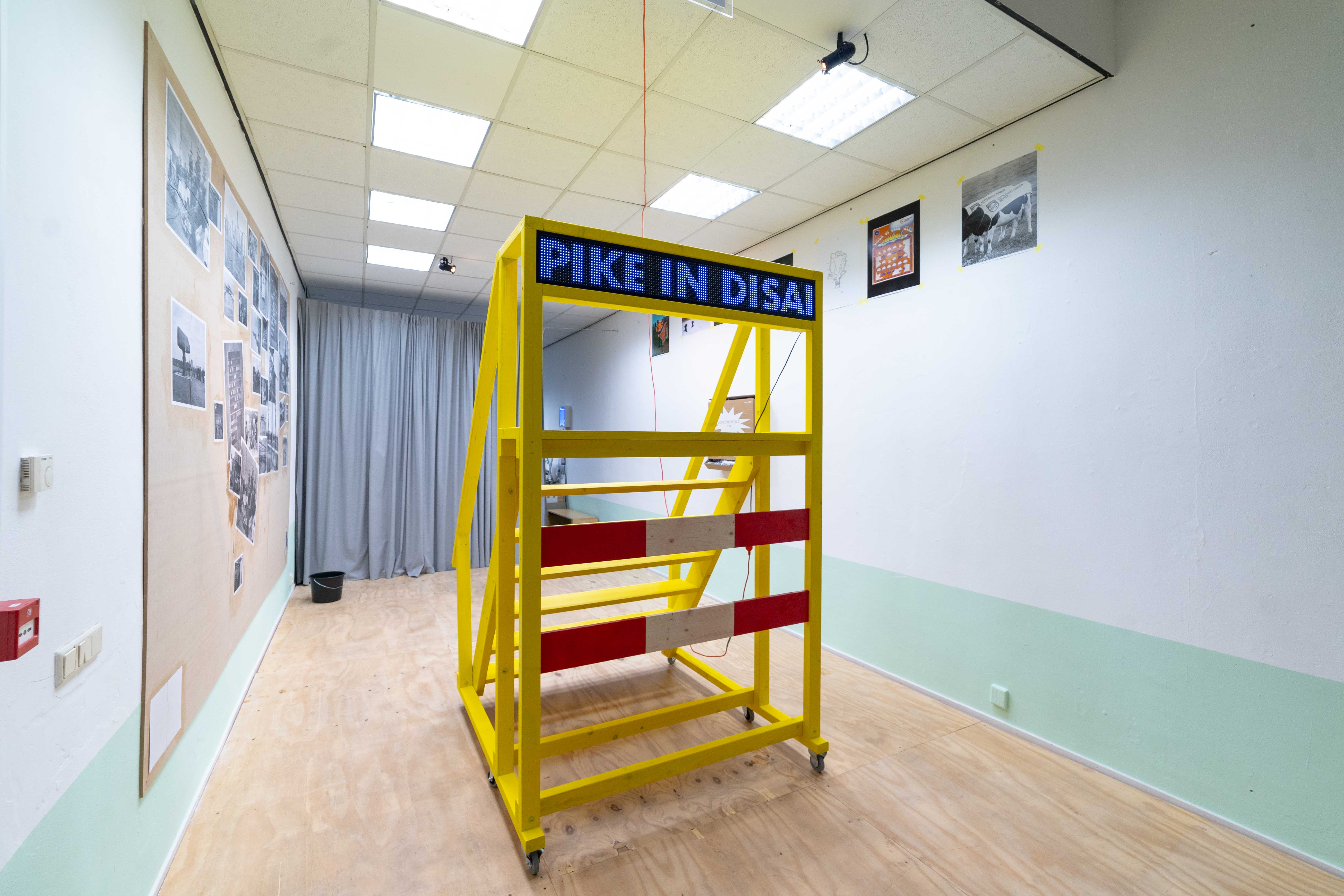



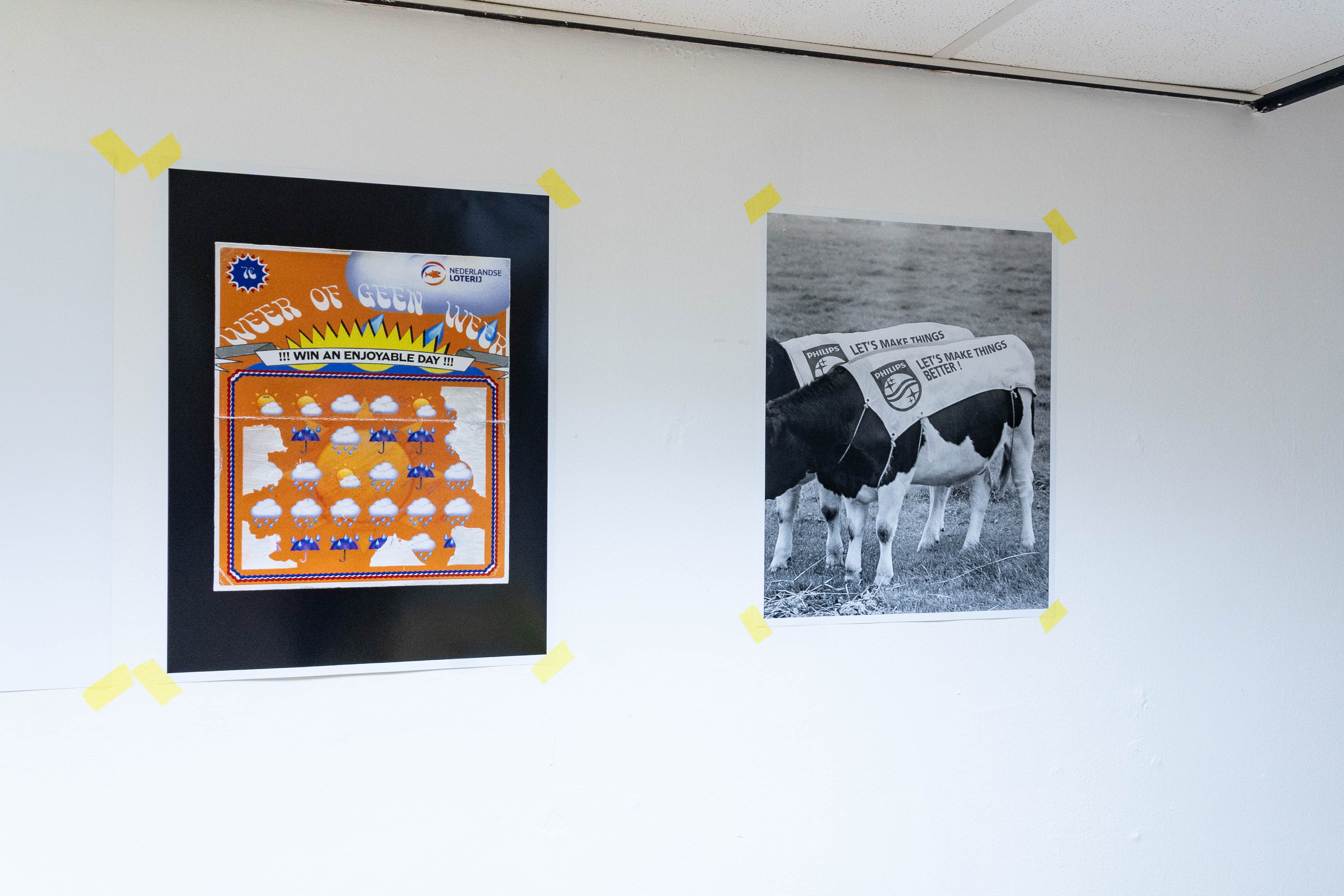
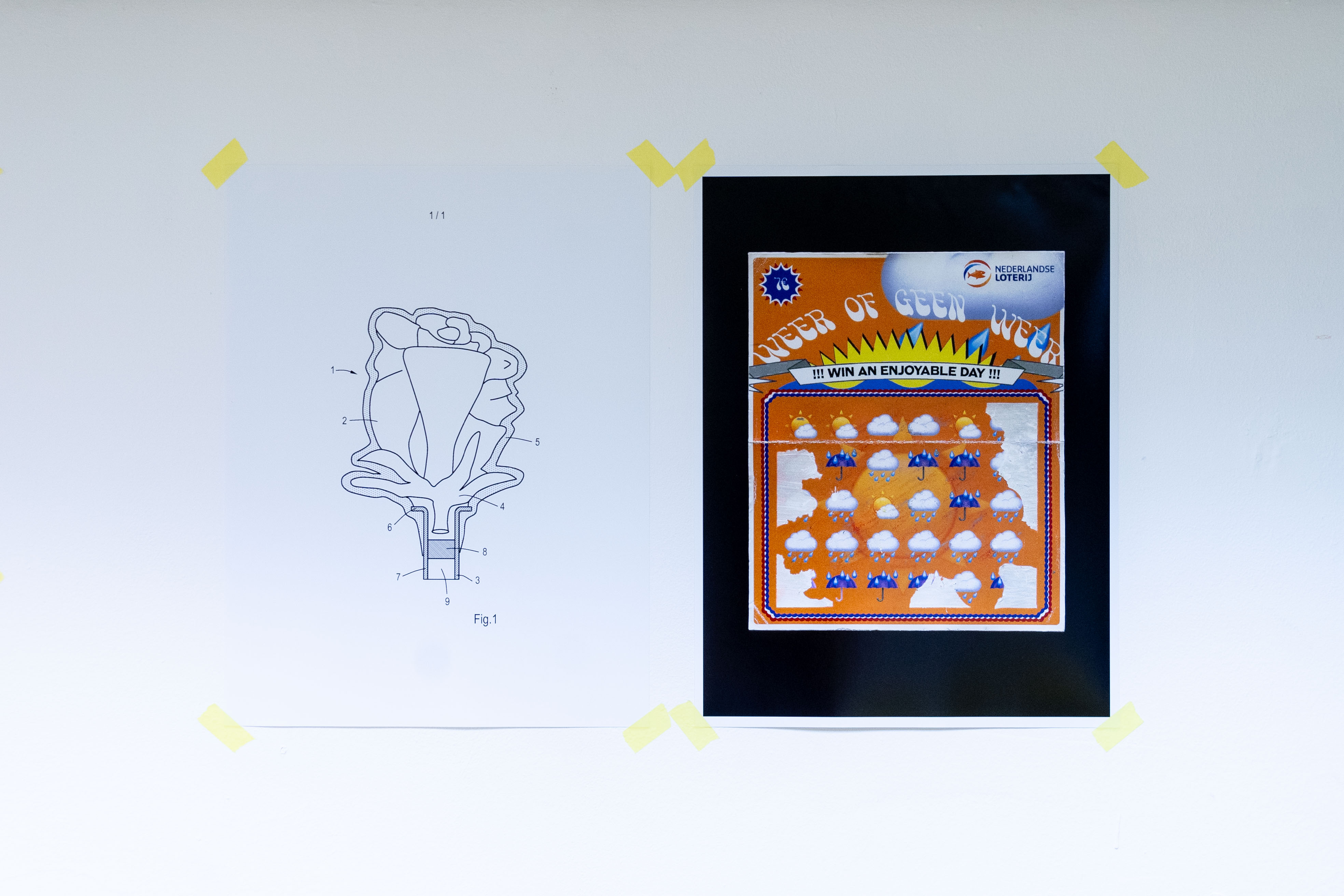
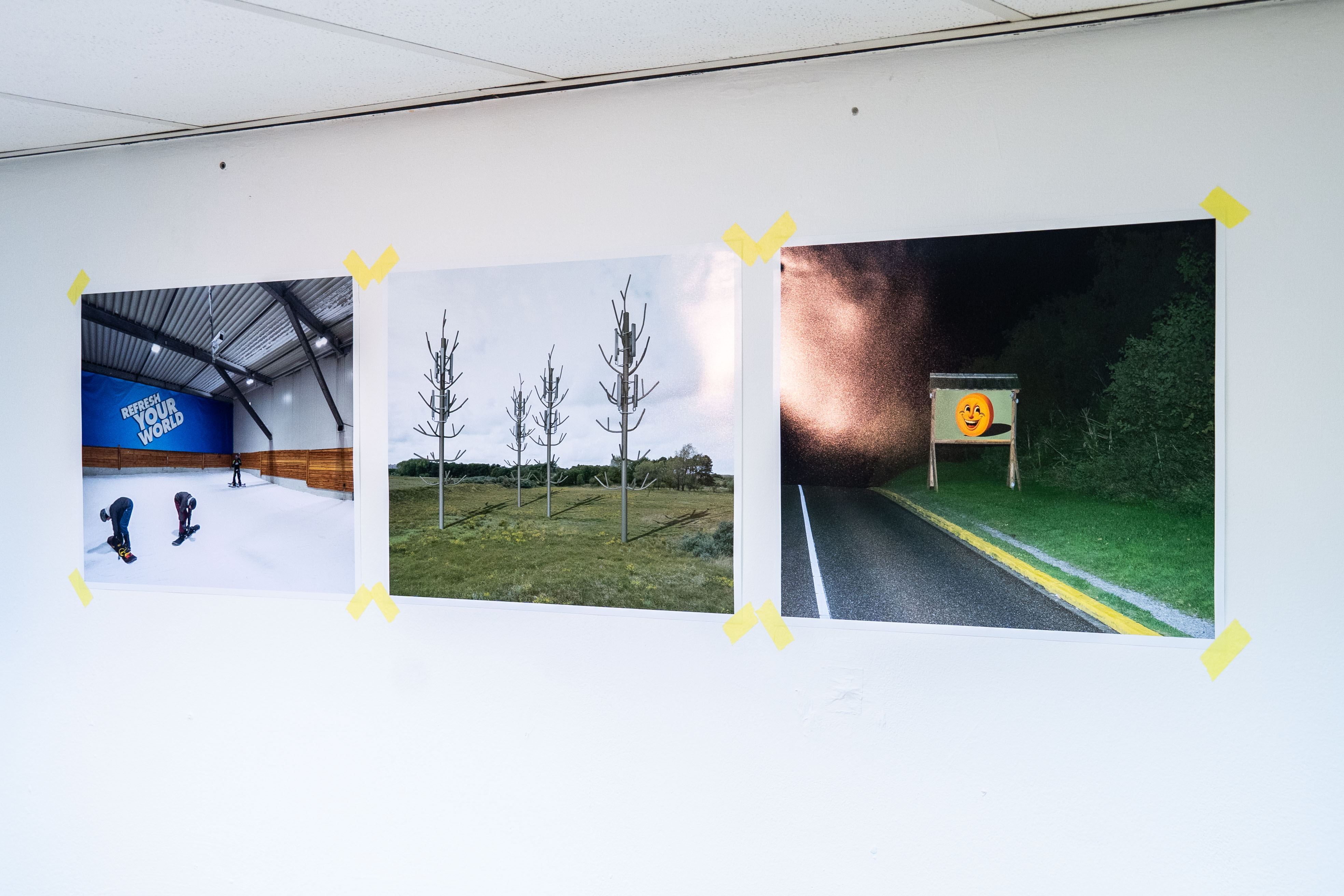
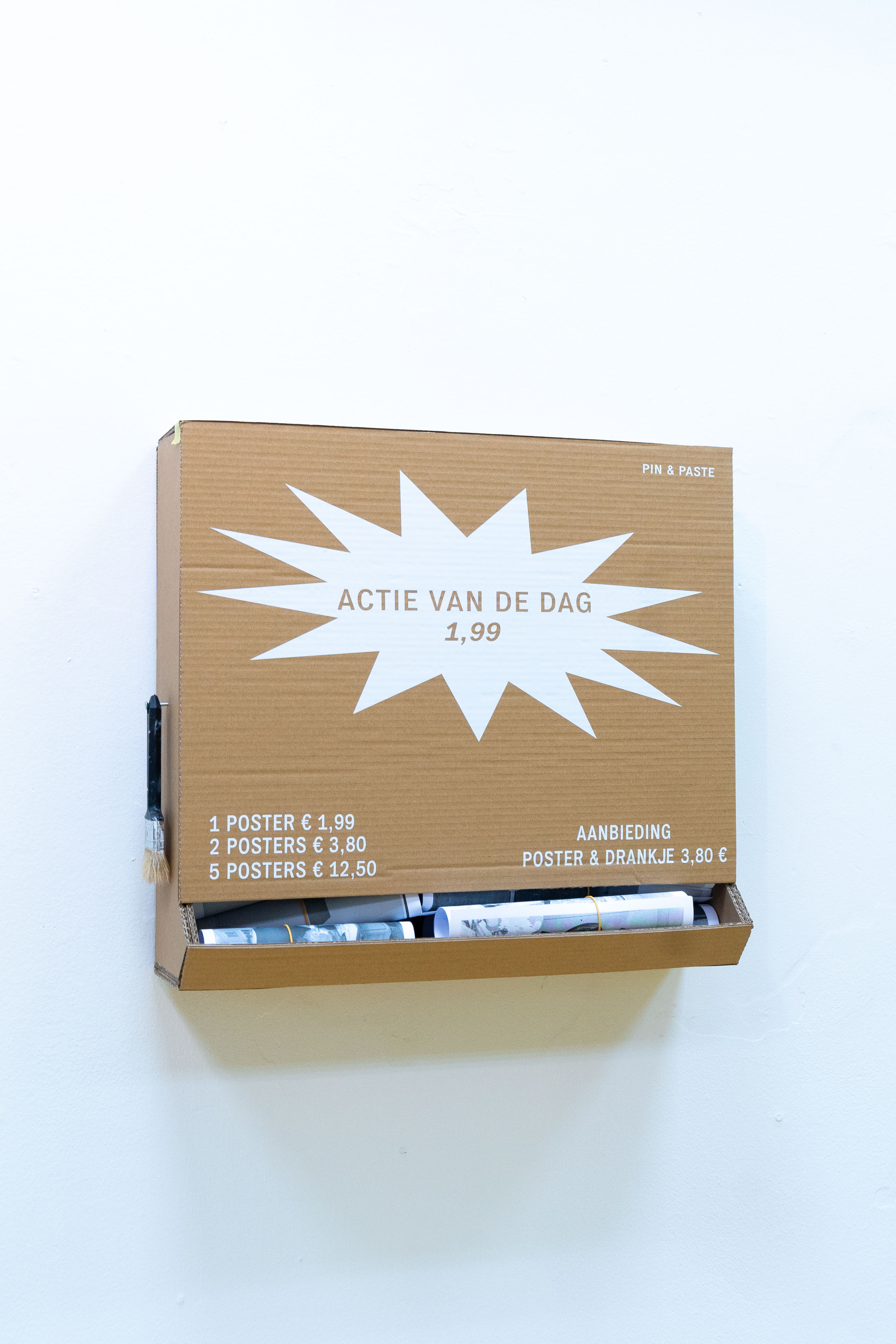
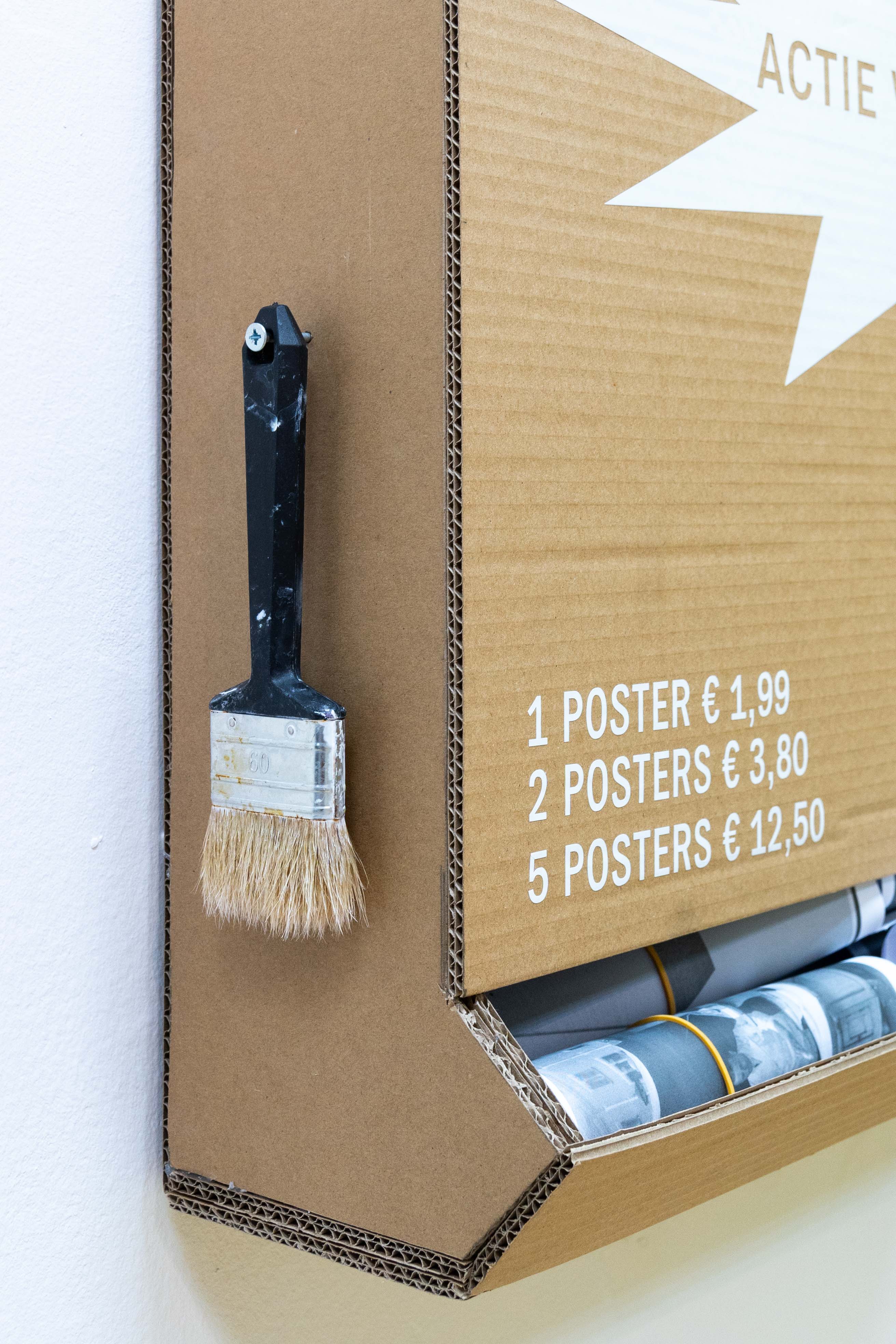


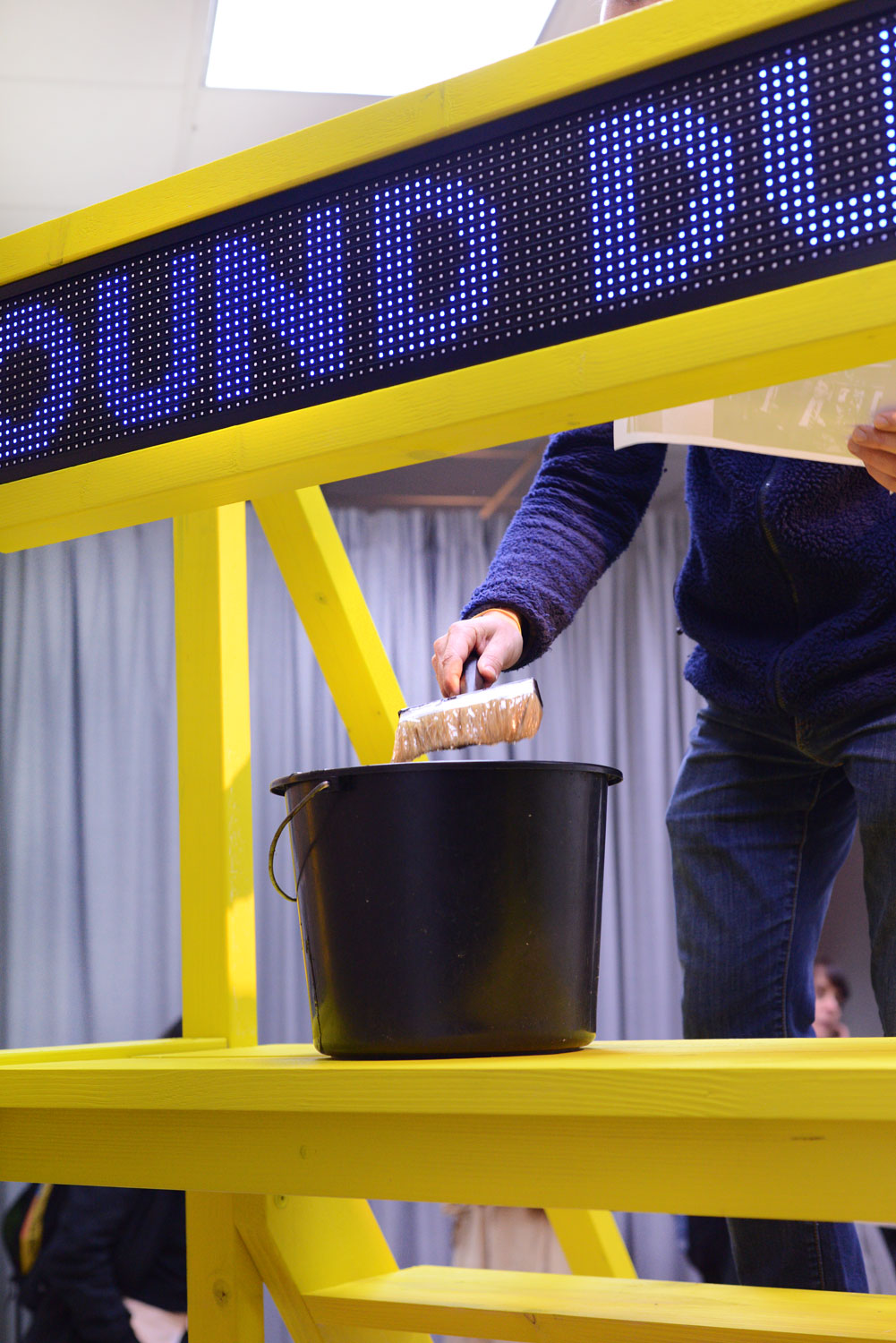
ABOUT
Since March 2018 The Balcony curates exhibitions supporting the presentation of upcoming practices with a focus on alternative formats of display, keen on collaborations and cross-generational presentations. The initiative was previously hosted in the vitrine of a violin store, originally known as The Balcony (2018 – 2020), as well as the basement of a former office space, previously known as Susan Bites (2019 – 2021).
In 2021 the initiative relocated to a permanent location in the city centre at Nieuwe Molstraat 14-A2, hosting an exhibition space and artist studios. Starting from September 2023 The Balcony is curated by Arthur Cordier (b.1993. BE), Valentino Russo (b.1994. IT) as well as Abril Cisneros Ramirez (b. 2001. MX), Marica Kolcheva (b.1986. BG) and Ariane Toussaint (b.1996. FR), who recently joined the team to expand the curatorial and public program. The team warmly thanks the artists for making this exhibition possible, Stefan Bandalac (SBAE) for the technical partnership and graphic designers Pavlo Radich and Julia Waraksa from STAATSDUET. Members of the initiative support the programme on a project and often on a voluntary basis, your support is appreciated.
